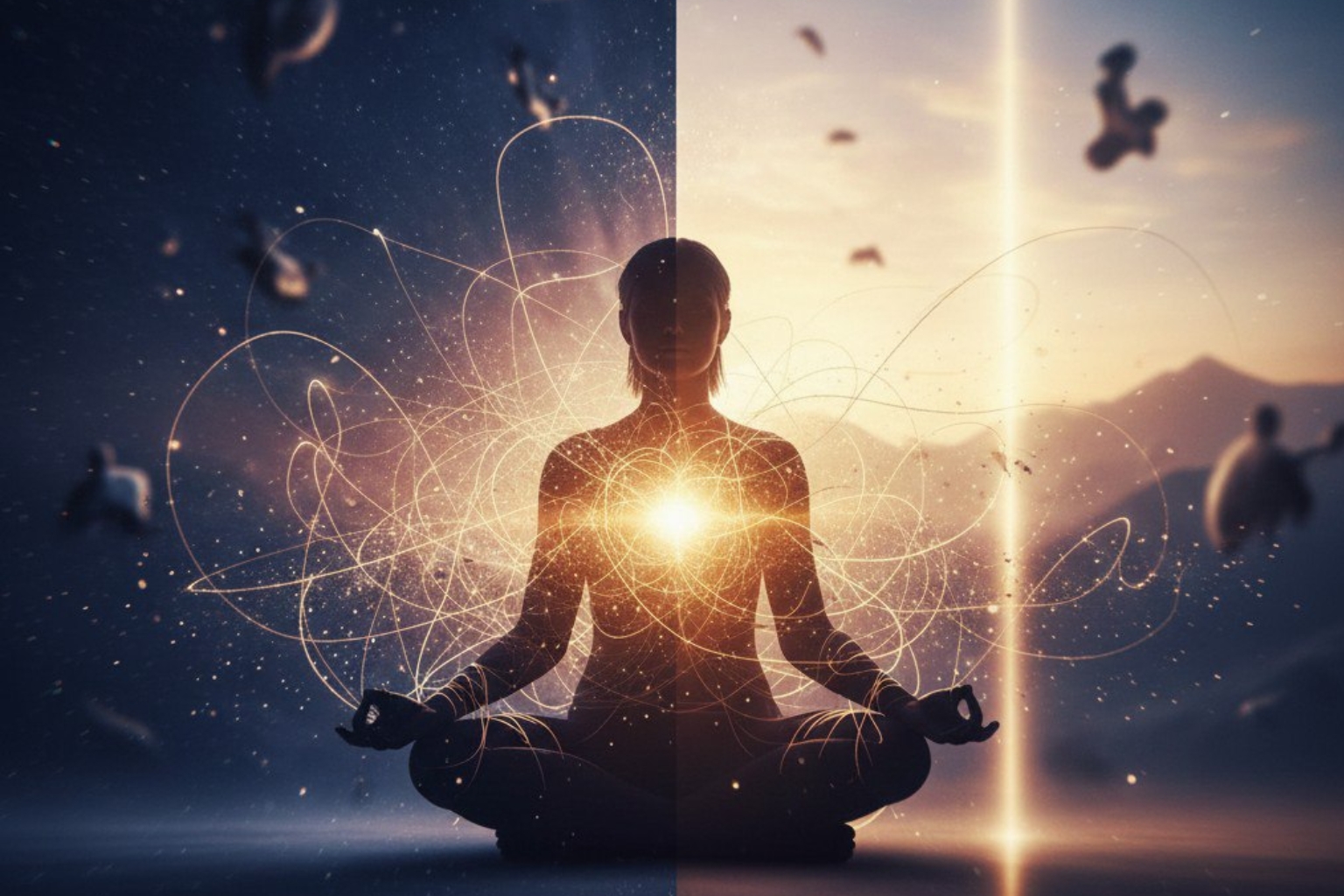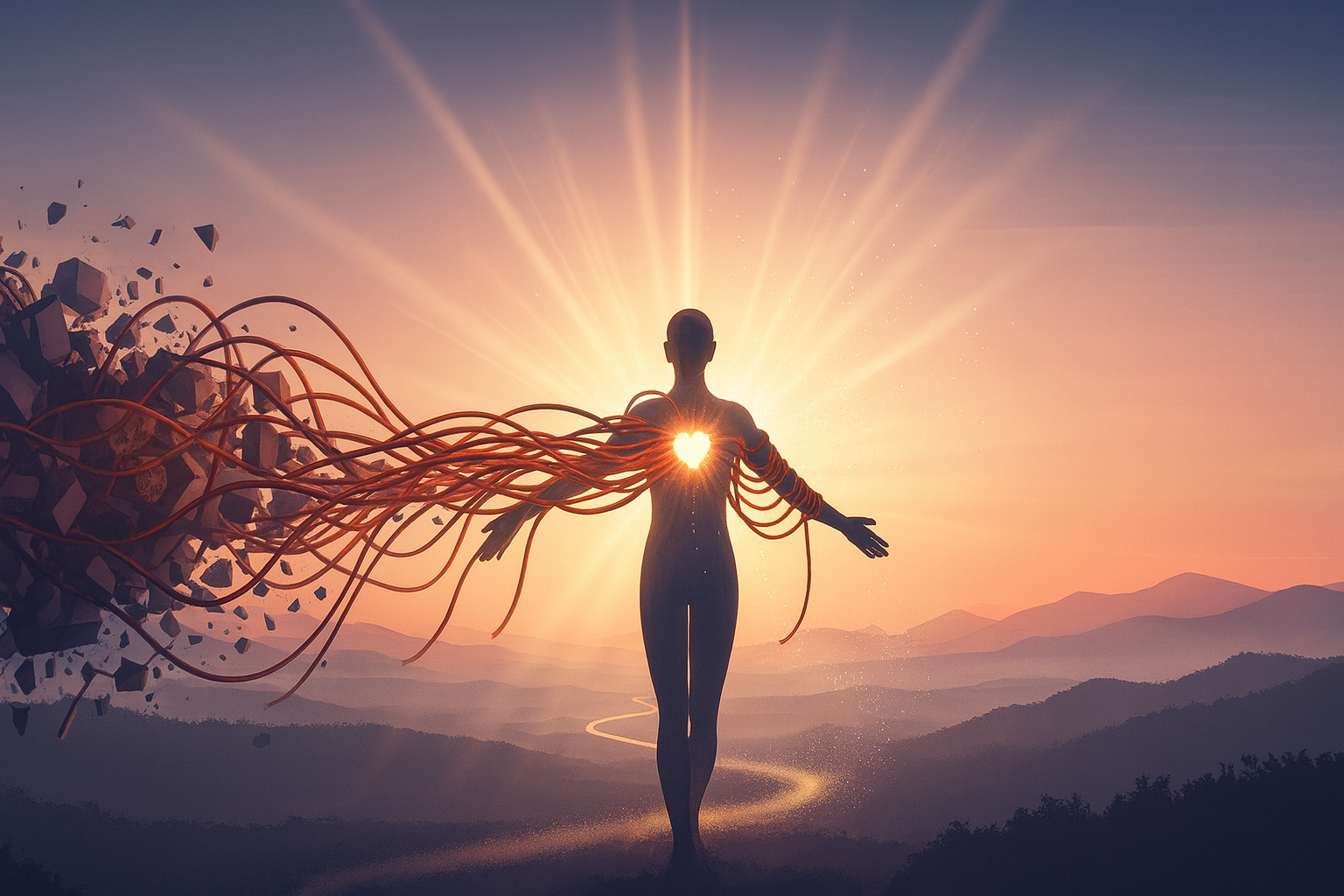Tired of the Cycle?
Eastern Wisdom on Breaking Free from Pain and Worry
The Buddhist View: Understanding Dukkha
Buddhism begins with Dukkha: the fundamental dissatisfaction of life. It's not just pain, but the restless, nagging feeling that things aren't right. This arises from craving and attachment to things that are, by their nature, impermanent.
The primary sources of this craving include:
- Craving Material Possessions: The desire for more or better physical things.
- Attachment to Specific Outcomes: When happiness depends on a particular result.
- Wanting Relief from Discomfort: The aversion to any unpleasant feeling or situation.
- Clinging to Idealized Ideas: Holding onto perfect notions of how life, relationships, or oneself should be.
We suffer when we cling to these impermanent desires, failing to see that everything changes.
The Trap of Impermanence (Anicca)
The core concept of Anicca, or impermanence, reveals why we get stuck. Life is in constant flux. When we resist this natural flow—clinging to a job, a relationship, or a specific version of ourselves—we create our own suffering. This often unfolds as a cycle:
- An external event occurs (e.g., A plan falls apart).
- We experience resistance to impermanence (e.g., "This shouldn't be happening!").
- This leads to emotional turbulence (Stress, Anxiety, Helplessness).
Accepting impermanence is the first step to freedom from this cycle.
Honesty
Truthfulness in thought, word, and deed.
Compassion
Empathy and kindness towards all beings.
Purposeful Work
Engaging in meaningful actions aligned with one's duty.
Self-Control
Mastery over one's senses and mind.
Patience
Endurance and tolerance in challenging situations.
The Hindu View: Action and Dharma
Hinduism offers the lens of Karma, the law of action and consequence. Our present is shaped by our past actions, creating patterns that can feel like a cycle (Samsara). This isn't fate, but a call to conscious action.
The path out is Dharma: righteous conduct or one's true duty. It’s a framework for living with purpose and integrity. The list illustrates key pillars of Dharma, showing how cultivating these qualities aligns us with cosmic order and reduces suffering.
The Cycle of Karma and Samsara
Our choices create a perpetual loop that keeps the cycle of rebirth (Samsara) in motion. This cycle typically flows as follows:
- An **Action** is performed, often driven by desire or aversion.
- This action produces a **Consequence** or result.
- The consequence creates a **Mental Impression** or tendency within us.
- This impression, in turn, fuels new **Desires** and motivations for further actions, thus perpetuating the cycle.
Breaking this cycle requires purifying our actions by aligning them with Dharma, leading to liberation from endless repetition.
Shared Tools for Inner Peace
Though their maps differ, both paths lead toward the same mountain peak of inner peace. They share core practices that shift focus from controlling the external world to transforming our internal landscape.
The table below demonstrates the profound impact of mindfulness. By observing our thoughts without judgment, we reduce reactivity and anxiety, cultivating a state of clarity and calm, even amidst chaos.
| Mental State | Without Mindfulness | With Mindfulness |
|---|---|---|
| Anxiety | High (8) | Low (3) |
| Clarity | Low (3) | High (8) |
| Reactivity | High (9) | Low (2) |
| Peace | Low (2) | High (9) |
The Great Shift: Inner vs. External Focus
External Control Focus
"I will be happy when I get that promotion / when my anxiety goes away / when people act how I want."
Result: Constant struggle, frustration, and attachment to outcomes.
Inner Transformation Focus
"I can cultivate peace and awareness now, regardless of my job, my feelings, or others' actions."
Result: Resilience, detachment, and stable well-being.


